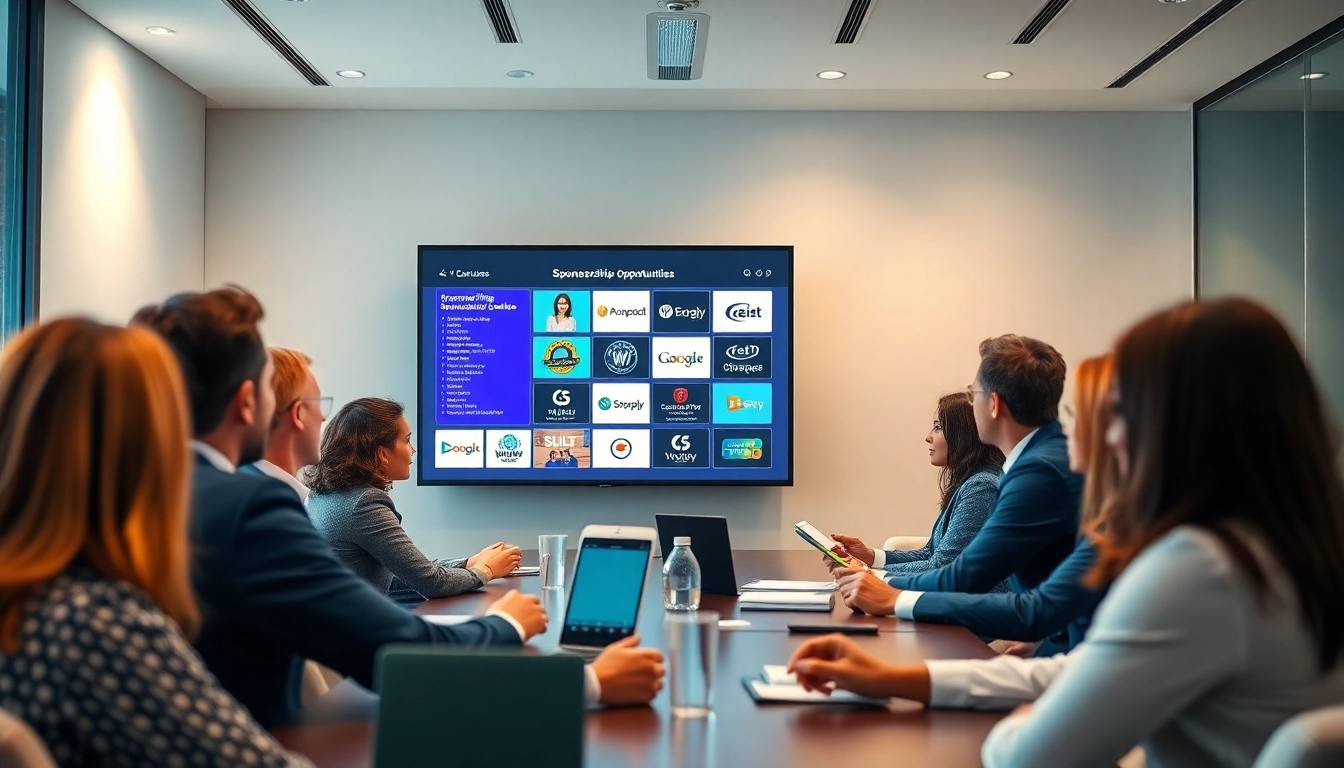Sponsorship opportunities can play a pivotal role in helping businesses and organizations grow their brand awareness, expand their clientele, and forge long-lasting relationships. Such opportunities are not merely financial transactions; they are collaborations that benefit both sponsors and the sponsored. Understanding the nuances of these opportunities, how to identify them, create compelling proposals, and execute deals effectively can significantly affect your success. This comprehensive guide aims to illuminate every aspect of sponsorship opportunities, offering insights that can be leveraged for maximum benefit. For more information on how to engage with potential sponsors, you may explore relevant sponsorship opportunities.
Understanding Sponsorship Opportunities
What Are Sponsorship Opportunities?
Sponsorship opportunities involve financial and logistical support given by a company or individual to events, projects, or organizations in exchange for promotional benefits. This mutual relationship allows sponsors to boost their brand visibility while providing the sponsored party with necessary resources, which can include funding, products, or services. Sponsorships can vary considerably in scale, from local community events to major global sporting competitions.
Types of Sponsorships Explained
Understanding the different types of sponsorships is crucial for identifying what might suit your needs or the needs of your potential sponsors. Here are some common types:
- Event Sponsorship: Sponsors provide funding for events in exchange for branding opportunities, such as a logo on promotional materials or reserved seating.
- Broadcast Sponsorship: In this arrangement, sponsors align themselves with television or radio programs, allowing for advertisement and brand placement during content runs.
- Team Sponsorship: Businesses sponsor sports teams, effectively gaining a marketing platform through team merchandise, uniforms, and events.
- Cause Sponsorship: Companies may sponsor charities or social causes, enhancing their public image by demonstrating social responsibility.
- Media Sponsorship: Partners support media outlets in exchange for advertisement and promotional coverage.
The Importance of Sponsorships for Brands
Sponsorships are critical for brands for various reasons. Firstly, they allow companies to reach target audiences that align with marketing strategies while enhancing brand visibility and awareness. Furthermore, sponsorships can cultivate goodwill, especially in social cause-related partnerships, resulting in increased customer loyalty. When executed strategically, these collaborations also provide an avenue for innovative engagement techniques that may attract potential customers in an increasingly competitive landscape.
How to Identify Sponsorship Opportunities
Researching Potential Sponsors
Identifying sponsors that align with your goals requires diligent research. Start by analyzing competing events, organizations, and groups that have secured sponsors. Understand their target audiences, sponsor profiles, and overall campaign strategies. Use tools like social media analytics to determine which companies are engaging with similar audiences and consider using databases and industry reports for detailed insights.
Utilizing Online Resources for Sponsorships
There are numerous online platforms dedicated to connecting events and projects to potential sponsors. Websites such as Looking for Sponsor provide curated lists of companies ready to sponsor various types of initiatives. Social media platforms can also be an excellent resource for discovering brands actively seeking to engage in sponsorship opportunities.
Networking Strategies to Find Sponsors
Networking remains one of the most effective ways to find sponsors. Attend industry conferences, business seminars, and related events. Make connections with professionals in your field, including marketers and sponsorship coordinators. Maintaining a digital presence on platforms like LinkedIn can facilitate these connections, enabling you to reach out to potential sponsors directly and share your value proposition.
Creating a Compelling Sponsorship Proposal
Key Elements of Successful Proposals
A well-crafted sponsorship proposal should include several key components:
- Executive Summary: A brief overview of who you are and the sponsorship’s purpose.
- Details about Your Organization or Event: Describe your target audience, your mission, and the goals of the event or project.
- Sponsorship Levels: Offer different tiers of sponsorship with varying benefits, making sure to highlight the ROI for each level.
- Benefits to Sponsors: Clearly outline what the sponsor will gain from the partnership.
Tailoring Proposals to Sponsor’s Needs
To increase the chances of securing sponsorships, tailor your proposals to the specific needs and interests of prospective sponsors. Start by understanding their branding goals and how your event can help achieve them. Personalizing the proposal can significantly enhance its appeal, making it clear that you value what the potential sponsor has to offer and how you can meet their specific objectives.
Incorporating Value for Sponsors
Incorporating tangible value for sponsors is critical for establishing a mutually beneficial relationship. This can include media coverage, social media mentions, and exclusive access to your audience. Share case studies or testimonials showcasing past successes to underscore the potential return sponsors might expect.
Executing Sponsorship Deals Effectively
Best Practices for Sponsorship Management
Successful sponsorship collaborations require meticulous management. Begin by setting clear expectations and deliverables from the outset. Establish a contract detailing each party’s responsibilities to ensure accountability. Regular communication throughout the sponsorship duration is crucial to adapt to any changes and maintain transparency.
Maintaining Positive Relations with Sponsors
Long-term relationships with sponsors can lead to continual support. Ensuring that you fulfill your obligations, showing appreciation, and including sponsors in the promotional campaigns are effective strategies to nurture these relationships. Following up after the event to provide updates about the impact of the sponsorship also strengthens bonds and paves the way for future collaborations.
Leveraging Social Media for Sponsor Promotion
Utilizing social media platforms can amplify the reach of sponsorships. Develop a comprehensive social media strategy focused on highlighting your partners. Tagging sponsors in relevant posts, hosting community engagement events, and using designated hashtags can help showcase the partnership while driving sponsorship value.
Measuring the Success of Sponsorship Opportunities
Key Performance Indicators for Sponsorship Success
Measuring the success of sponsorships requires establishing KPIs (Key Performance Indicators) that align with the initial objectives. Common metrics include audience engagement levels, social media reach, brand impressions, and financial metrics like return on investment (ROI).
How to Report Results to Sponsors
Providing a detailed report to sponsors following the conclusion of your event or project is crucial. Include data on the KPIs agreed upon, along with analysis on performance resulting from the sponsorship. Highlight successful engagement stories, analytics on audience reach, and financial impacts to reinforce the value delivered.
Using Feedback to Enhance Future Sponsorships
Feedback from both sponsors and attendees can help refine future sponsorship proposals and events. Use surveys or informal feedback channels after an event to gather insights on what worked and what did not. This information is invaluable for building stronger partnerships and improving future proposals.



